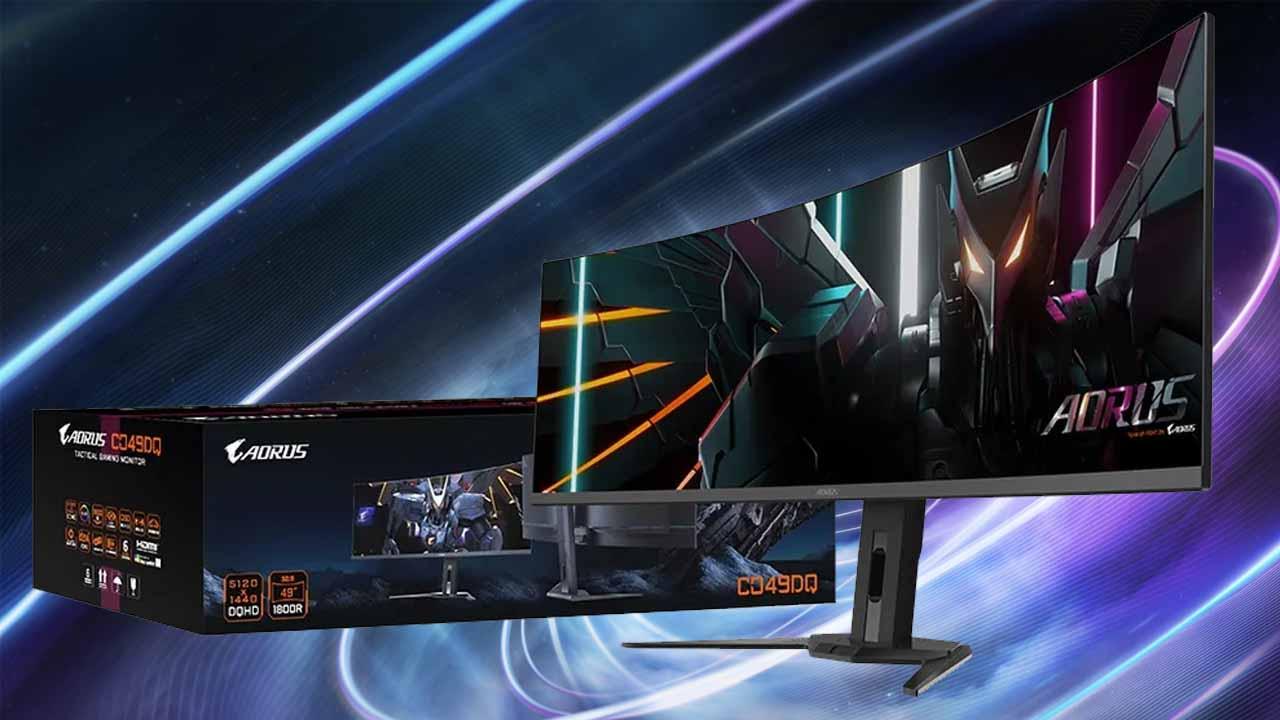Lately we are seeing a boom of manufacturers launching OLED monitors for gaming, although using an OLED panel for this type of use is somewhat questionable since, as most of you already know, they are susceptible to the burn-in effect. However, in AORUS they seem to have found in the AI your best ally to avoid burns on your new OLED monitor, the Aorus CO49DQ 49 inches and ultra panoramic format. We tell you everything below.
In case you didn’t know, one major problem with OLED panels (whether PC monitors or TVs) is that they can suffer from what’s known as the effect burn if they display static images for too long. This can be a problem on an OLED monitor used for a long time to play with the same game, since most games have a HUD that remains static and can generate this effect that even when you turn off the monitor or display other images, one still sees it in the background as a ghost effect.
Features of the Aorus COO49DQ
Let’s start by talking about the features of this Aorus CO49DQ, then talk about how they used AI to solve the afterglow issues in their OLED panel. We have before us a 49-inch screen with a QD-OLED matrix with DQHD resolution (5120 x 1440 pixels), with 1800R curvature for greater gaming immersion. The panel also offers a 144Hz refresh rate and 0.03ms response time, which is quite common in OLED panels.
As a good gaming monitor, it also integrates some specific features that Aorus described as “tactical”… you know: the possibility of placing a pointer in the center for shooting games, the FPS counter in the OSD, etc. But besides that, it would also be a very good monitor for other purposes thanks to its productivity-oriented features, like 10-bit color depth, 99% DCI-P3 color space coverage or its certification. VESAHDR True Black 400 screen
As for video inputs, you can use its two HDMI 2.1 ports with CEC support and its DisplayPort 1.4 with HBR3. It also has USB-C with DP-Alt (18W), a USB 3.2 Type-A port hub, and a pair of 5W RMS stereo speakers. Of course, the monitor also incorporates a V-shaped support that allows you to modify its ergonomic position, in addition to having a VESA 100 anchor on the back to be able to mount it on an arm or hang it on the wall.
AI fixes the burn-in effect on this OLED monitor
Nobody doubts that artificial intelligence or AI for short is the trendy term lately, and many manufacturers use it as a simple marketing strategy because everyone associates it with innovation. Aorus claims to use an AI-based algorithm to minimize the risk of burn-in on the OLED panel, which is combined with a series of additional features called “OLED Care” that affect usage time, pixel cleaning, static control, pixel shift. , APL stabilization, etc.
Now, the manufacturer hasn’t said anything about why or how the AI-based algorithm it mentions is used. It’s really good that manufacturers are aware that OLED gaming monitors can have serious burn-in issues because of gaming hubs and are taking action about it, but honestly in this case it seems to us that, due to the lack of more specific explanations, this use of AI is more marketing than anything else (we do not deny that it has “something” based on AI, but you will know what if they don’t define it).
Of course, Aorus mentions the warranty period and assures that during this period (3 years) the afterglow issue is covered, so at least they should be pretty sure that the systems they implemented in the monitor work well.
Moreover, what Gigabyte (Aorus) has not said is neither the launch date nor the price at which this CO49DQ will arrive on the market, so we must wait to reveal these unknowns.









